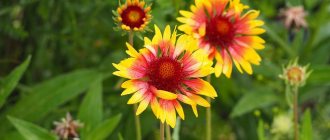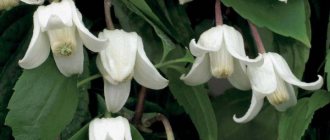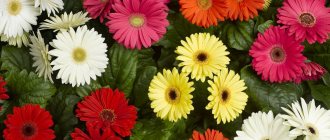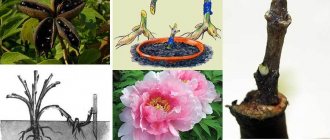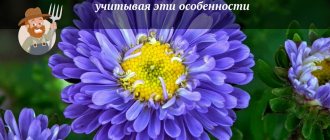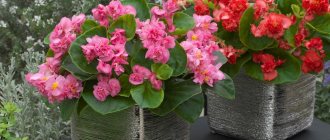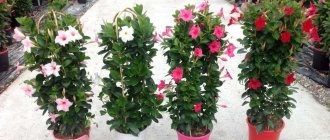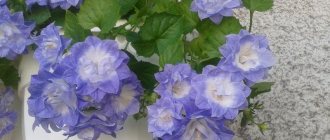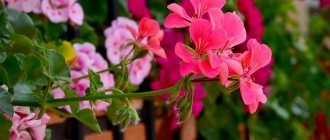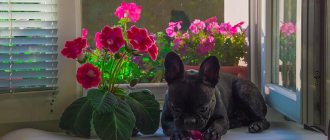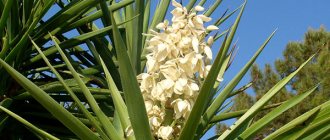In temperate zones, the flower is grown through sowing seedlings in February. The plant is planted in open ground at the end of May, when the threat of the last frost has passed. Lobelia, as a resident of Africa, is not at all resistant to low temperatures.
Required conditions:
For a flower garden, choose a sunny area protected from the wind.
It achieves its greatest decorative effect on moderately fertile, loose, loamy or sandy loam soils; with an excess of nitrogen, it increases the vegetative mass to the detriment of flowering.
Good precursors for lobelia will be: cereals, legumes, greens
You should not place it after: nightshade crops and next to petunia.
General description with photo
In different classification systems, lobelia is classified either in the Lobeliaceae family of the same name, or in the Kolokolchikov family. In nature and in ornamental gardening, the crop is represented by both annual and perennial varieties. It can take the form of a bush, subshrub or herbaceous plant. For growing in the garden, preference is often given to compact species no more than half a meter in height, although some varieties can grow up to 1.5 m. The plant has fragile shoots that branch from the very base of the bush. The peduncles are short, the buds are small, but the flowering is abundant, in bright colors, mainly in blue-blue tones. The first flowers bloom in June, do not last long, but continuously replacing each other, create the effect of continuous flowering until the onset of autumn cold weather. The fruit is a capsule with very small seeds that remain viable for up to 3 years.
Varieties of lobelia with photos
The genus includes approximately three hundred species, some of which are grown on an industrial scale for use in the production of medicines. In horticultural culture, only about 20 varieties are grown that are easy to care for, so even inexperienced gardeners should pay attention to them.
The genus is represented by several forms.
- Ampel or cascade. The shoots are thinner and more flexible, lodging type.
- Erect. It has a standard height and almost perfectly straight shoots, making the plant look columnar.
- Compact. A very small, but lush, densely filled bush no more than 15 cm in height.
- Spreading. It forms a loose bush with shoots up to 30 cm, while its height does not reach 20 cm due to its spreading shape.
- Dwarf. The shortest type of lobelia, barely reaching 12 cm.
- Ampelous-bush. A plant of unusual bush shape with shoots directed downwards.
Lobelia erinus (blue)
Annual compact bush up to 25 cm in height. The leaves are small, elongated. Small inflorescences are painted in blue tones. The varietal line may also include white, muted red and some other colors. Blooms throughout the warm season.
Lobelia cardinalis (purple)
Tall, reaching a meter in height, with straight branched stems. The inflorescences are spike-shaped, purple-red. The difference between this species is its preference for waterlogged, swampy soil. The best place for planting it on the site is the banks of reservoirs, hollows, and places where melt and rainwater drain. Characterized by high winter hardiness.
Lobelia Syphilitica
It is very similar to the purple variety both in appearance and in planting preferences and frost resistance, but it blooms in blue-violet tones.
Lobelia fiery
It has tall, up to 75 cm, erect shoots and spike-shaped elongated inflorescences, painted in scarlet tones.
Lobelia Dortman
An endangered species, increasingly rare in the wild. It has bell-shaped flowers of bluish or white color, loves sandy soils.
Lobelia climbing
A climbing perennial of the ampelous type, blooming in a blue and white palette. With high-quality molding, it produces exceptionally lush specimens that bloom so profusely that the bush turns into a blue cloud during flowering. Good for hanging baskets.
Lobelia "Riviera"
It has short and straight, rigid stems and is a dwarf variety, not exceeding 13 cm in height. Grown as an annual. It blooms for a very long time and profusely with small pink-purple corollas of spike-shaped inflorescences.
Lobelia Rosamund
Another popular low-growing annual with sloping stems, red flowers with a white throat. The first buds open 2.5 months from the date of sowing the seeds and continue to replace each other until the soil autumn frosts.
Mr. Summer Resident Recommends: Various Ways to Sow Lobelia
45 thousand seeds are contained in one gram of planting material. It is packaged in paper packages, ampoules, and plastic zip bags. Considering that the seeds are small, choose a planting method.
Traditionally, lobelia is sown in a box. Perform the following sequence of actions:
- pour 1 cm of drainage layer onto the bottom of the container;
- fill three-quarters with soil mixture;
- water the soil with solutions of potassium permanganate or fungicide;
- level the surface and compact;
- mix lobelia seeds with sand on a sheet of paper;
- sow evenly over the entire soil area;
- cover the box with film or glass;
- Place in a bright place with an air temperature of +23…+25 °C.
Flower growers are experimenting with new ways to sow lobelia seeds.
Toothpick
The ground in the box is covered with a layer of snow. Scattered seeds are clearly visible on the white surface. Using a toothpick, spread them evenly over the soil area.
Hydrogen peroxide
Lobelia seeds are placed in a glass and filled with hydrogen peroxide for 5-10 minutes. Add water, mix and spread the mixture with a teaspoon over the prepared soil surface.
Tea bags
Cut off the gluing area and thread, straighten the bag. The tea leaves remain as drainage and fertilizer. Add soil to the top of the bag and place it in a plastic container. Place one seed at a time on watered, compacted soil in bags.
Toilet paper
Place 2-3 layers of toilet paper on a strip of plastic film. Moisten with water. Using tweezers, lay out the seeds every 2-4 cm. 1.5 cm retreat from the edge of the strip. Cover the spread out seeds with another layer of paper and roll them up. Secure with an elastic band and attach a label with the name of the variety and the date. Place the roll in a glass and add 3-4 cm of water, cover. The sprouted seeds are picked and planted in separate containers along with paper.
Peat tablets
A practical way. The tablets are poured with boiling water for 10 minutes and after the peat has swollen, lobelia is sown. The grown seedlings along with peat are transferred to a pot or planted in a flower bed or border.
Underlay for laminate
This method is called "snail". From a 2 mm thick substrate, cut meter-long strips 10 cm wide. 20-30 cm of soil is placed on one edge of the moistened surface of the material and carefully rolled into a “snail”. The roll is secured with rubber bands, placed vertically and filled with soil. Seeds of 10 pieces are distributed with a wet toothpick every 5 cm in a spiral and moistened. Place the roll in a light-transmitting container and traditionally cover it with glass or film.
How to grow lobelia from seeds?
Growing a crop in open ground begins with planting seedlings at home. Perennial varieties can also be planted in open ground, but in this case flowering this year will be sparse or absent altogether. For annual varieties, planting by seedlings is preferable.
When to sow seeds for seedlings?
Lobelia should be planted early, literally in early February. Then, by the time it is planted in open ground, it will have already formed quite lush bouquets that will be ready for rapid, abundant flowering. However, over such a long period of time, seedlings can become very elongated, especially if there is a lack of lighting; this point should be taken into account in advance and space should be left in the planting container so that as the seedlings grow, soil can be added to them.
Lobelia seeds do not require pre-soaking.
How to sow lobelia for seedlings?
Due to the very small size of the seeds, the planting process can be difficult. Experienced gardeners use the “wet match” method for this. The sulfur-free end is dipped in water and then in a container with lobelia seeds. Those that remain stuck to the match are transferred to a cup with soil. They need to be buried minimally; nothing bad will happen if they remain lying on the surface (we are talking about planting seeds at home, since in open ground light seeds will be blown away by the wind). It is necessary to arrange a mini-greenhouse on top using plastic film, which must be removed daily for ventilation, and after the first shoots removed completely.
Seedling care
If all conditions are met, the first shoots should appear in 2 weeks. From this time on, the shelter will need to either be removed or a number of holes made in it for free ventilation for the first time. The soil should be permanently moist, but care must be taken to ensure that the seeds do not rot in it.
Lobelia is a light-loving plant. In the absence of good lighting, its seedlings will quickly stretch upward, which will not benefit its decorative effect. Even if the containers are on a bright windowsill, it will not be superfluous to provide the seedlings with additional lighting in the evening. Watering young seedlings is carried out using a spray bottle from a sufficiently large distance so as not to nail them to the ground.
Picking
There are no strict rules regarding picking time. You can determine when it will be needed by eye. You need to pick up seedlings several at a time into one cup, without trying to maintain a certain distance between them. This accuracy will ensure the splendor of the future composition.
Important! When picking into cups, soil should be poured into them to no more than a quarter of the height, since it is necessary to leave room for future addition to strengthen the root system and to avoid overly elongated shoots.
Adding soil
As the sprouts grow and stretch, it is recommended to constantly add 1-2 teaspoons of soil under the seedlings until the container is full. Don’t be afraid that some sprout will be covered with soil; this is not critical for this plant; very soon it will come to the surface and acquire additional roots.
Pruning seedlings
This point of caring for young lobelia seedlings can be classified as life hacks for its successful cultivation. As the seedlings grow, shoots that are too elongated should be trimmed with scissors. This must be done without fanaticism, forming neat bushes. Thanks to this haircut, future bushes will look neat, lush and bloom very profusely. Pruning is also recommended for hanging varieties, since weakly leafy, hanging shoots are not highly decorative.
Planting seedlings in open ground
You should begin taking containers with grown seedlings outside for several hours a day with the onset of consistently warm days. Once the air temperature is finally optimized, you can plant it in open ground.
Throughout the entire period of growing seedlings, the soil must not be allowed to dry out, even if you have to water several times a day!
This can quickly lead to irreversible consequences.
Useful tips for growing lobelia seedlings
One of the important points when caring for seedlings is timely watering.
Since lobelia seedlings are very small at the initial stages, watering should be done correctly using a syringe with a needle.
After the first true leaves appear, the plant can be planted in pots in families of several seedlings, choosing the most:
- strong;
- juicy;
- quality.
It is correct to pinch bush varieties of flowers after a certain period of growth, then the flower will branch well, but ampelous varieties do not need pinching.
The correct conditions for seedlings to grow after they hatch are a temperature of 13-17 oC and good natural light.
Important!!!
Despite the fact that lobelia is thermophilic, hardened seedlings tolerate light frosts down to –1 °C.
What problems can you encounter when growing?
The main problem when growing seedlings is watering.
Important!!!
If the plant is flooded, the thin seedlings will become moldy, and if there is little moisture, the seedlings will instantly curl into a tube.
Light also influences growth; there should be a lot of it. If this moment is ignored, the seedlings will stretch upward.
It is for this reason that experienced gardeners recommend using additional lighting when the seedlings are on a northern windowsill.
It is also important to consider the timing of fertilization.
Resist the temptation to feed the seedlings; feeding will be harmful during initial growth.
You should fertilize:
- already in the flowerbed;
- in containers on the loggia;
- in flowerpots or flowerpots.
It is important to comply with the conditions, then the seedlings will be strong and the color will be active.
Lobelia
Lobelia care
The most labor-intensive process in the process of growing a crop is the stage of obtaining healthy, full-fledged seedlings. Further care for lobelia is not very difficult, but requires some attention and participation.
Watering
For successful development and abundant flowering, it is necessary that the soil always remains slightly moist. If it dries out completely, you can lose the plant very quickly. During the hot, dry summer period, you may have to water in the morning and evening. This is especially true for specimens grown not in open ground, but in hanging flower pots and floor vases. Due to the small volume of soil in them, rapid drying out is inevitable.
Top dressing
The first feeding can be done when the seedlings are 3-4 weeks old. It should be borne in mind that it can provoke stretching of shoots. In this case, fertilizing should be combined with subsequent pruning. When planted in nutritious soil, the plant can grow successfully with minimal doses of fertilizer. Mineral complexes for petunias are most suitable for lobelia. You can get by by adding nitrophoska or wood ash or alternating them. Nitrophoska is added according to the instructions, wood ash is diluted in water at the rate of 1 tbsp. l. per liter
Trimming
The first pruning, as already mentioned, is carried out at the stage of growing seedlings. Subsequently, pruning the bushes is necessary to preserve their decorative properties and stimulate the formation of new buds. After the first wave of flowering, the shoots are shortened more radically, so that after some time the plant can bloom again. In this case, the second flowering is often more abundant and spectacular.
Once every 3 years, it is recommended to carry out radical anti-aging pruning.
Soil requirements
The culture loves loose and well-permeable soils, grows well on leafy or ordinary garden soil with the addition of sand and vermiculite.
The soil should not be oversaturated with humus, otherwise lobelia may refuse to bloom.
Soil and containers for lobelia
The soil for the plant is light, crumbly, with neutral or slightly alkaline pH readings. This can be easily checked with litmus paper or vinegar. Place soil on a piece of glass and water it with the solution. The desired reaction is a faint hiss.
Use ready-made nutrient soil or prepare the soil mixture yourself. The following composition is recommended (2:2:2:1):
- garden soil;
- peat;
- humus;
- river sand.
Other mixture options are used: vermiculite, coarse river sand, garden soil or humus.
Use a composition of the following components, take 1 part:
- river sand;
- peat or leaf soil;
- turf soil;
- coconut substrate.
A large amount of organic matter in the soil stimulates the growth of greenery when flowering is poor. Vermiculite reduces soil acidity, increases permeability and stores water. This has a beneficial effect on the development of lobelia.
It is convenient to use ready-made peat tablets. They are sold in different sizes and in special plastic cells, 6, 50, 100 pieces. The seeds are germinated, picked and transplanted to a permanent place along with the substrate.
The soil mixture is disinfected before sowing:
- calcined in the oven;
- pour boiling water over it;
- treated with 1% potassium permanganate solution;
- heated by steam;
- use fungicides Previkur or Maxim.
To sow lobelia seeds use:
- boxes made of wood or plastic;
- used cups and jars for fermented milk products;
- eggshells and packaging;
- tea bags; plastic cassettes.
The container should be washed with soda or treated with potassium permanganate. To prevent rotting of the roots, drainage holes are made in the bottom of the containers. The plastic is easily pierced with a nail or awl heated over a fire.
Possible growing problems
- The leaves dry out and curl. The reason lies in insufficient watering. Complete and possibly repeated complete drying of the soil was allowed.
- The leaves take on a red tint. Reddening of lobelia leaves occurs due to sudden changes in temperature, however, this usually does not cause noticeable harm to the plant.
- The leaves become covered with dark spots or darken entirely and fall off. The cause may be a fungal infection, fusarium or powdery mildew. It is necessary to immediately remove all diseased leaves and shoots, and if their number exceeds half the volume of green mass, the plant must be disposed of. For small lesions, it is necessary to treat the bushes with a solution of colloidal sulfur or another similar fungicide.
- The leaves and stems have taken on a purple tint. This effect can be observed after planting seedlings in open ground during strong nighttime drops in temperature. Most often, after adaptation, the plant acquires its normal color.
- Leaves become sticky. There is damage from scale insects or mealybugs. In the initial stage, treatment with a solution of laundry soap or spraying with an insecticide can help. Severely affected plants should be pulled out and burned.
Some types of lobelia have healing properties that help successfully treat lung diseases.
